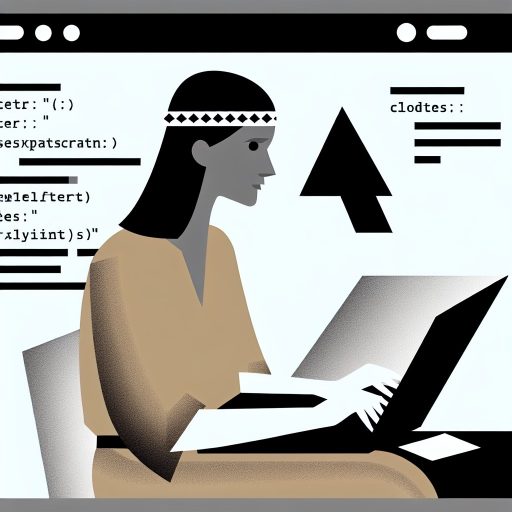Introduction to Code Reviews
The Role of Code Reviews
Code reviews play a vital role in software development.
They ensure code quality and maintainability across projects.
Moreover, they enable teams to improve their coding skills.
Consequently, code reviews foster a culture of continuous improvement.
Benefits of Code Reviews
First, code reviews catch bugs early in the development process.
Addressing these issues prevents costly fixes later on.
Second, they promote knowledge sharing among team members.
When developers review each other’s code, they learn new techniques.
This collaboration leads to a more versatile team.
Enhancing Team Collaboration
Code reviews encourage open communication within teams.
They create an environment for constructive feedback.
As a result, developers feel valued and heard.
This fosters a sense of belonging and teamwork.
Establishing Standards and Best Practices
Code reviews help enforce coding standards within a team.
Following set guidelines improves consistency in code quality.
Tech Consulting Tailored to Your Coding Journey
Get expert guidance in coding with a personalized consultation. Receive unique, actionable insights delivered in 1-3 business days.
Get StartedAdditionally, they guide new team members on best practices.
By incorporating feedback, teams can refine their processes.
Facilitating Onboarding and Mentorship
Code reviews are instrumental for onboarding new developers.
New team members can learn about the codebase through reviews.
A senior developer can guide them effectively during this process.
This mentorship fosters a supportive learning environment.
Enhancing Code Quality Through Collaborative Feedback
Promoting Best Practices
Code reviews foster an environment where best practices flourish.
They encourage developers to share their knowledge and techniques with each other.
As a result, teams produce code that adheres to industry standards.
Identifying Issues Early
Code reviews help catch bugs before they escalate into major problems.
By reviewing each other’s work, developers can spot mistakes they might overlook.
This early detection saves time and reduces costs associated with fixing errors later.
Improving Knowledge Sharing
Collaborative feedback promotes continuous learning among team members.
Developers can learn new languages or frameworks through discussions.
Build Your Vision, Perfectly Tailored
Get a custom-built website or application that matches your vision and needs. Stand out from the crowd with a solution designed just for you—professional, scalable, and seamless.
Get StartedMoreover, they can share insights on optimizing code performance.
Encouraging Team Collaboration
Code reviews strengthen communication within the team.
They create a platform for constructive discussions and feedback.
As a result, team members feel more connected and involved in the project.
Boosting Confidence and Accountability
Regular code reviews enhance individual confidence in writing code.
When developers know their work will be reviewed, they strive for high quality.
This accountability leads to better overall performance from the entire team.
Driving Innovation
Collaboration during code reviews often sparks new ideas.
Team members can offer solutions and different perspectives on problems.
Consequently, innovation thrives in a culture that values shared feedback.
Identifying and Mitigating Bugs Before Production
The importance of early detection is crucial.
Detecting bugs early saves time and resources.
It prevents issues from escalating in production environments.
Additionally, it enhances overall software quality.
Optimize Your Profile, Get Noticed
Make your resume and LinkedIn stand out to employers with a profile that highlights your technical skills and project experience. Elevate your career with a polished and professional presence.
Get NoticedFurthermore, early detection builds team confidence.
Collaborative Code Review Processes
Code reviews encourage collaboration among team members.
During these reviews, team members share diverse perspectives.
As a result, they can identify potential bugs more effectively.
Moreover, fresh eyes often spot issues that others may overlook.
Developing a Structured Review Framework
A structured review framework simplifies the process.
This structure allows reviewers to focus on critical areas.
It helps establish standard practices across the team.
Additionally, using templates can enhance review efficiency.
Utilizing Automated Tools
Automated tools streamline code review processes.
These tools can detect common bugs instantly.
They also reduce the workload on team members.
Consequently, teams can focus on more complex problem areas.
Creating a Feedback Culture
A positive feedback culture promotes open communication.
Encouraging constructive criticism leads to team improvement.
As a result, team members feel more comfortable sharing ideas.
Ultimately, this culture drives innovation and excellence.
Uncover the Details: The Role of Continuous Integration in Streamlining Development
Promoting Knowledge Sharing and Team Skill Development
Enhancing Collaboration
Code reviews foster collaboration among team members.
Developers share insights and best practices during these reviews.
As a result, the codebase improves through collective knowledge.
Facilitating Learning
Code reviews are a powerful learning opportunity.
Junior developers gain valuable feedback from more experienced colleagues.
This process accelerates their growth and confidence.
Additionally, seasoned developers sharpen their skills by explaining complex concepts.
Sharing Knowledge Across the Team
These reviews provide a platform for knowledge transfer.
Team members can discuss different coding techniques and tools.
Such discussions lead to a more knowledgeable group overall.
Moreover, this helps in reducing knowledge silos.
Promoting Best Practices
Implementing code reviews promotes adherence to best practices.
Team members learn to write cleaner and more efficient code.
Consequently, this leads to fewer bugs and higher quality software.
Creating a Supportive Environment
Code reviews foster a culture of constructive feedback.
Team members feel more comfortable sharing their challenges and solutions.
This atmosphere encourages continuous improvement and innovation.
Learn More: How Adopting Test-Driven Development Will Boost Your Software Quality
Establishing Coding Standards and Best Practices
The Importance of Consistency
Consistency in coding fosters better teamwork and collaboration.
When everyone follows the same standards, code becomes predictable.
This predictability reduces confusion and speeds up development cycles.
Moreover, it eases the onboarding of new team members.
Defining Coding Standards
Coding standards outline how code should be written and structured.
These guidelines typically cover naming conventions, file organization, and commenting practices.
Establishing clear standards enhances code readability and maintainability.
For example, using meaningful variable names helps team members understand the code quickly.
Best Practices for Code Quality
Encouraging best practices ensures high-quality code delivery.
Implementing practices such as code reviews and automated testing are crucial.
Code reviews facilitate knowledge sharing and improve code quality.
Additionally, automated testing catches errors early in the development process.
Continuous Improvement
Coding standards should evolve as technology and team dynamics change.
Regularly revisiting and updating these standards keeps them relevant.
Encouraging feedback from team members promotes a culture of continuous improvement.
This way, the team adapts to new challenges and technological advancements smoothly.
Tools to Support Best Practices
Utilizing tools can streamline the enforcement of coding standards.
For instance, linters help identify code style violations automatically.
Version control systems support collaboration by tracking changes effectively.
Integrating these tools into workflows enhances productivity significantly.
Find Out More: Beyond the Code: Why Software Development Best Practices Are Crucial for Success

Encouraging Team Communication and Collaboration
Benefits of Open Communication
Open communication fosters a positive team environment.
It allows team members to express their ideas freely.
Moreover, it enhances trust and strengthens relationships.
As a result, team collaboration improves significantly.
Facilitating Regular Feedback
Regular feedback is vital for continuous improvement.
Code reviews facilitate this feedback loop effectively.
They allow developers to learn from each other’s experiences.
This process leads to higher quality code and fewer errors.
Building a Collaborative Culture
Encouraging collaboration helps break down silos.
When team members collaborate, innovation thrives.
Additionally, it promotes a sense of belonging and shared purpose.
Consequently, team members are more motivated to contribute.
Enhancing Problem-Solving Skills
Code reviews expose team members to diverse perspectives.
This exposure sharpens their problem-solving skills.
As they discuss code, they uncover various solutions.
Such discussions stimulate creative thinking among developers.
Creating a Learning Environment
A culture of code reviews cultivates learning.
Team members can share knowledge and best practices.
This sharing strengthens team capabilities as a whole.
Continuous learning ensures that everyone remains updated.
Uncover the Details: How to Implement Version Control in Your Agile Development Workflow
Reducing Technical Debt and Increasing Maintainability
Understanding Technical Debt
Technical debt accumulates when developers prioritize speed over quality.
This practice may lead to short-term gains but creates long-term problems.
Over time, the cost of fixing these issues can surpass initial savings.
Code reviews help identify and address technical debt early in the process.
By fostering a culture of quality, teams can mitigate future complications.
Best Practices for Code Reviews
Establishing a clear review process significantly enhances code quality.
Encourage team members to provide constructive feedback during reviews.
Utilize tools that facilitate effective collaboration and tracking.
Moreover, set a standard for code presentation and documentation.
Following these steps helps streamline maintenance efforts in the future.
Enhancing Maintainability Through Collaboration
Code reviews promote shared understanding among team members.
Everyone gains insights into different coding styles and techniques.
This collaboration leads to a more cohesive codebase.
As a result, it simplifies onboarding for new team members.
Additionally, better-maintained code reduces frustration and development delays.
The Long-Term Benefits of Code Reviews
While code reviews may seem time-consuming, they yield significant long-term benefits.
Reduced technical debt leads to more resilient software products.
Investing time in reviews means less rework later, saving resources.
Ultimately, high-quality code contributes to smoother deployments and updates.
Consequently, teams can focus on innovation rather than troubleshooting issues.
Evaluating Team Performance and Fostering Accountability
The Role of Code Reviews in Team Dynamics
Code reviews serve as an essential alignment tool for developers.
They create a platform for constructive feedback among team members.
Encouraging dialogue strengthens relationships and builds trust.
This collaborative process directly influences team morale.
Improving Code Quality
Code reviews enhance overall code quality significantly.
They help catch bugs early, which reduces long-term costs.
Reviewing code fosters adherence to coding standards across the team.
Additionally, this process promotes knowledge sharing among members.
Encouraging Accountability
Holding team members accountable boosts personal responsibility.
Code reviews create a culture of ownership for one’s work.
When feedback is given, developers feel invested in their contributions.
A sense of accountability often leads to higher-quality output.
Measuring Team Performance
Code reviews can serve as a metric for evaluating performance.
Teams can analyze how often code is reviewed and its feedback quality.
This data can reveal individual and team growth over time.
Recognizing improvements motivates team members to excel further.
Facilitating Continuous Learning
Through code reviews, developers learn from each other’s expertise.
This exchange of knowledge promotes continuous personal growth.
Moreover, it prepares junior developers for future challenges.
A learning culture ultimately enhances team performance.
Additional Resources
Dhirendra Sinha on LinkedIn: 9 code review practices every …
What is SDLC? – Software Development Lifecycle Explained – AWS




